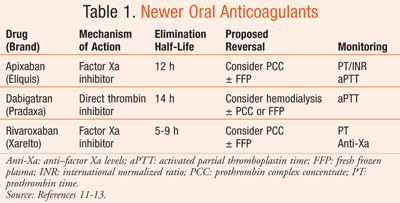

- INR NORMAL RANGE WITH ACUTE STROKE ACTIVATOR
- INR NORMAL RANGE WITH ACUTE STROKE PORTABLE
- INR NORMAL RANGE WITH ACUTE STROKE PROFESSIONAL
None had ICH on 24 hour head CT post IV rtPA. One patient underwent mechanical thrombectomy of right middle cerebral artery (M1) clot after IV tPA administration. All 3 of them were on ODFXIs for non-valvular atrial fibrillation. We found 2 patients on Rivaroxaban (20 mg once daily) and one on Apixaban (2.5 mg twice daily). Follow up head CT scans within 24 to 36 hours of IV rtPA administration were reviewed to determine the number of patients with ICH in this subset. A subset of patients who were taking ODFXIs within 48 hours prior to IV rtPA administration was identified. Demographics and home medication list were abstracted for each patient. The medical records of the patients who received IV rtPA (0.9 mg/kg) for AIS at our tertiary academic medical center from January 2006 till August 2017 were reviewed retrospectively. We present 3 patients who were taking ODFXIs prior to receiving IV rtPA. The majority of these reports are about oral direct thrombin inhibitor, Dabigatran, since it was approved and available in the market earlier than the oral direct factor Xa inhibitors (ODFXIs) ( 8). Only a few AIS patients who received IV rtPA and had been taking NOACs prior to the treatment have been reported thus far.

The most recent American Stroke Association statement on management of patients with acute ischemic stroke does not recommend the use of IV rtPA in patients with acute ischemic stroke (AIS) who were taking NOACs within 48 hours prior to the time of IV rtPA administration unless sensitive laboratory tests such as aPTT, INR, ECT, TT, or appropriate direct factor Xa activity assays are normal, due to a possible increase in the risk of bleeding complications, particularly intracranial hemorrhage (ICH) ( 2- 7). Non-vitamin K antagonist oral anticoagulants (known as novel oral anticoagulants (NOACs)) are more frequently being used as high quality data show that they are as effective as warfarin in stroke prevention in patients with non-valvular atrial fibrillation with lower rates of hemorrhagic strokes and better patient adherence ( 1). Intravenous Thrombolysis Stroke Factor Xa Inhibitors 1. Although we had a very low number of patients in our case series, our findings suggest that neither IV rtPA nor the combination of IV rtPA and intra-arterial thrombolysis increases the risk of ICH in AIS patients who are taking ODFXIs and their coagulation parameters are within normal range. They all had acute infarcts on their brain MRI, diffusion weighted image. None had intracranial hemorrhage (ICH) on 24 hour head CT post IV rtPA. One patient underwent mechanical thrombectomy of a large vessel clot after IV rtPA. They all received the last dose of the ODFXI within the last 24 hours prior to IV rtPA administration. Their aPPT, PT and INR levels were within normal ranges. All 3 received IV rtPA within 3 hours of symptom onset. Two patients were on Rivaroxaban (20 mg once daily) and one on Apixaban (2.5 mg twice daily).
INR NORMAL RANGE WITH ACUTE STROKE ACTIVATOR
However, as concordance with laboratory INR values decreases with higher INR values, it is recommended that with CoaguChek S INRs in the > 1.5 range, a standard laboratory measurement be used to confirm the results.We present 3 patients who were taking oral direct factor Xa inhibitors (ODFXIs) within 24 hours prior to receiving intravenous recombinant tissue plasminogen activator (IV rtPA) for acute ischemic stroke (AIS).

INR NORMAL RANGE WITH ACUTE STROKE PROFESSIONAL
When used by a trained health professional in the emergency department to assess INR in acute ischemic stroke patients, the CoaguChek S is reliable and provides rapid results. In the AIS group alone, the correlation coefficient and 95% CI was also high 0.937 (0.59 - 0.74) and diagnostic accuracy of the POCT device was 94%. The interclass correlation coefficient and 95% confidence interval between overall POCT device and standard laboratory value INRs was high (0.932 (0.69 - 0.78). The INR's were measured using the Roche Coaguchek S and the standard laboratory technique. The objective of this study was to evaluate the reliability, validity, and impact on clinical decision-making of a POCT device for INR testing in the setting of acute ischemic stroke (AIS).Ī total of 150 patients (50 healthy volunteers, 51 anticoagulated patients, 49 AIS patients) were assessed in a tertiary care facility.
INR NORMAL RANGE WITH ACUTE STROKE PORTABLE
In the emergency department, portable point-of-care testing (POCT) coagulation devices may facilitate stroke patient care by providing rapid International Normalized Ratio (INR) measurement.


 0 kommentar(er)
0 kommentar(er)
